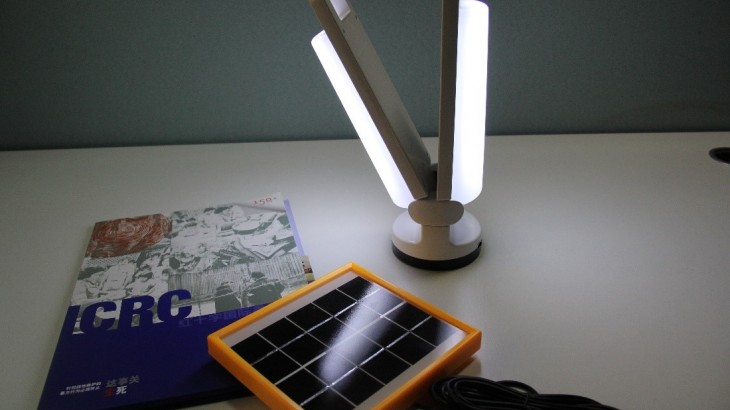Solar lamps: Bringing together innovation and technology to people caught in war

It's hard to imagine life without electricity. Yet this is the case for countless number of people affected by armed conflict in Yemen, Syria, South Sudan and Iraq. Many experience frequent interruption of public electric power and many simply do not have access to electricity at all.
Candles have been the traditional solution for lack of 'light'. The International Committee of the Red Cross (ICRC), a humanitarian organization working in warn-torn countries and countries affected by armed violence, used to distribute candles as part of its assistance to people. Observant of how needs and technology evolve, the ICRC made a big change in the fall of 2014. The institution decided to look for sustainable and innovative solutions to give beneficiaries' access to stable and reliable source of light. The ICRC regional delegation in Beijing was chosen to identify manufacturers of solar powered, portable LED lamps, with the capacity and interest to work in partnership with the ICRC to develop a product adapted for use in different contexts, be it in areas affected by war or natural disasters, to help people left without electricity.
Many of the lamps currently available in the market do not conform to the latest, desired environmental standards; lead-acid batteries pose safety issues during production, transportation and are an environmental concern when not disposed properly. The new technology with lithium-ion batteries extend the duration of the product by 2-3 times, which will reduce electronic waste.
"The ICRC strived to find a cost effective and durable product, which is adapted to the needs, produced with ethical, social and environmental standards," said Thomas RIESS, the ICRC's regional logistician for Asia and the Pacific. "The responsibility of a humanitarian organization is no longer limited to the fulfillment of its mission alone; it is also to put in place a procurement policy that respects the nature and the resources of future generations."
The ICRC was looking for solar LED lamps that use lithium-lion batteries, can be charged from solar panels as well as public power, and has a USB interface to charge mobile phones. Unable to find any model that meets its standards, the ICRC took one step forward and got together with an enterprise to jointly design a solar lamp it will eventually buy.
"It's a win-win situation," said LIU Hui, head of logistics, at the ICRC delegation in Beijing. "The manufacturers are willing to make an investment in research and development of new products. Working hand in hand with an international humanitarian organization, such as the ICRC, to develop an innovative product will give them a potential opportunity to access the humanitarian market."

ICRC deliveres solar lamp in Syria. CC BY-NC-ND / ICRC
After two years of discussion and research, a number of samples were produced and tested in the ICRC field operations and at the institution's headquarters in Geneva. Feedback and suggestions have been shared with the manufacturers, who have made modifications on the product and produced new samples for another round of tests. The latest model is cost-effective - 8 to 10 US dollars per piece - safe and environmentally friendly. The lamp can be lighted for up to 40 hours and recharged 1,000 times. The lamp can charge smart phones and it can also connect a small ventilator.
"Products distributed in ICRC's humanitarian assistance programs should be durable and simple to operate," Thomas said. "We keep the beneficiaries' living conditions, their traditional and educational background into consideration and we adapt as best as we can," he concluded.
